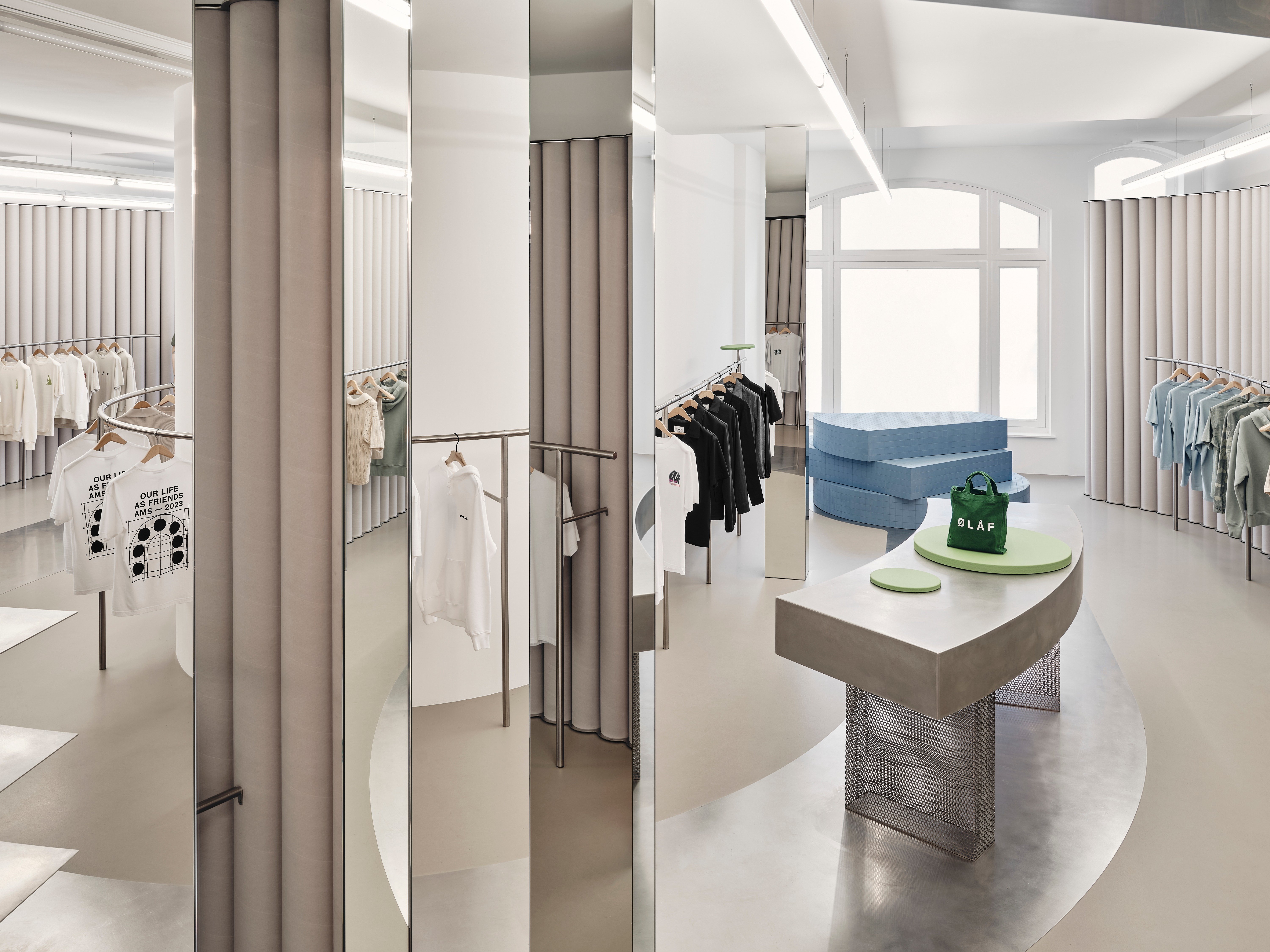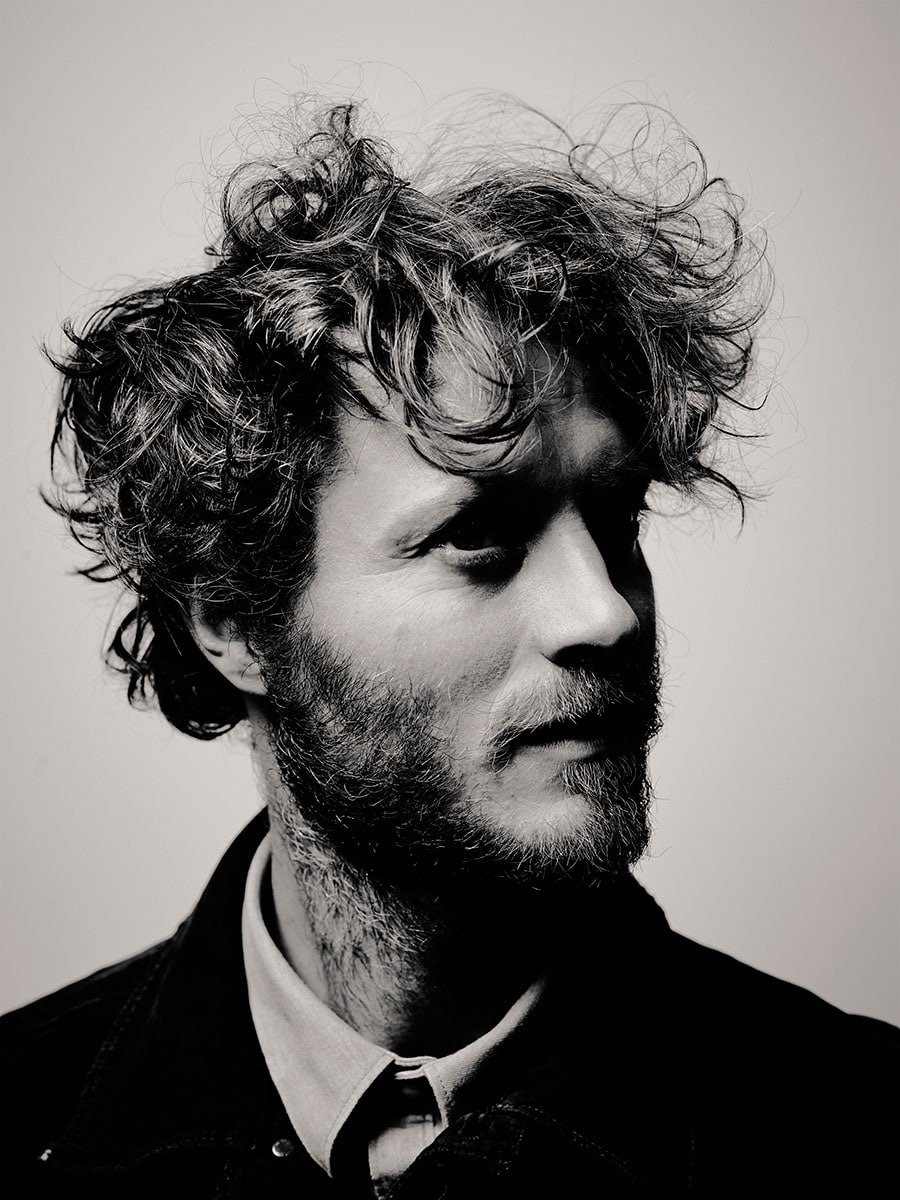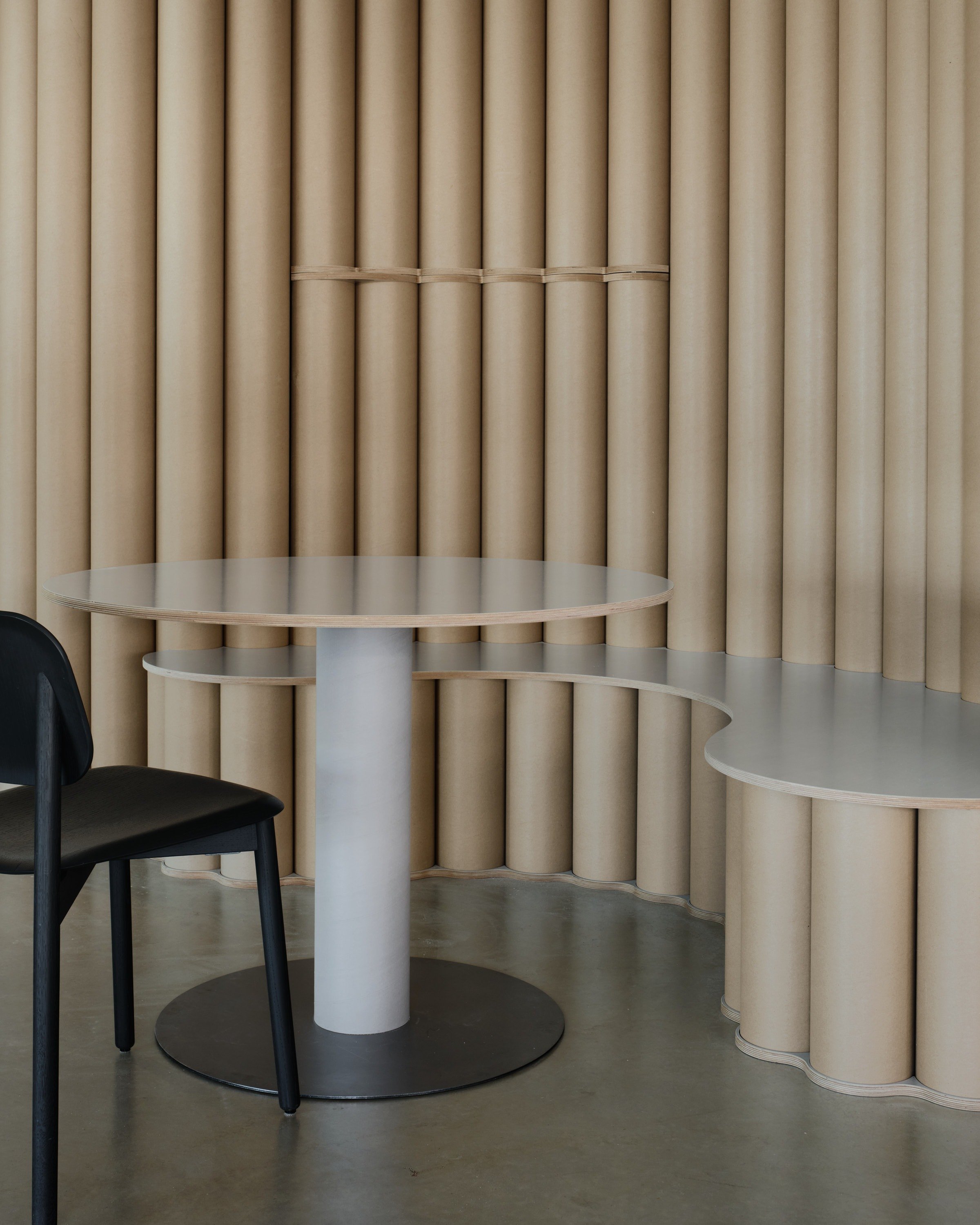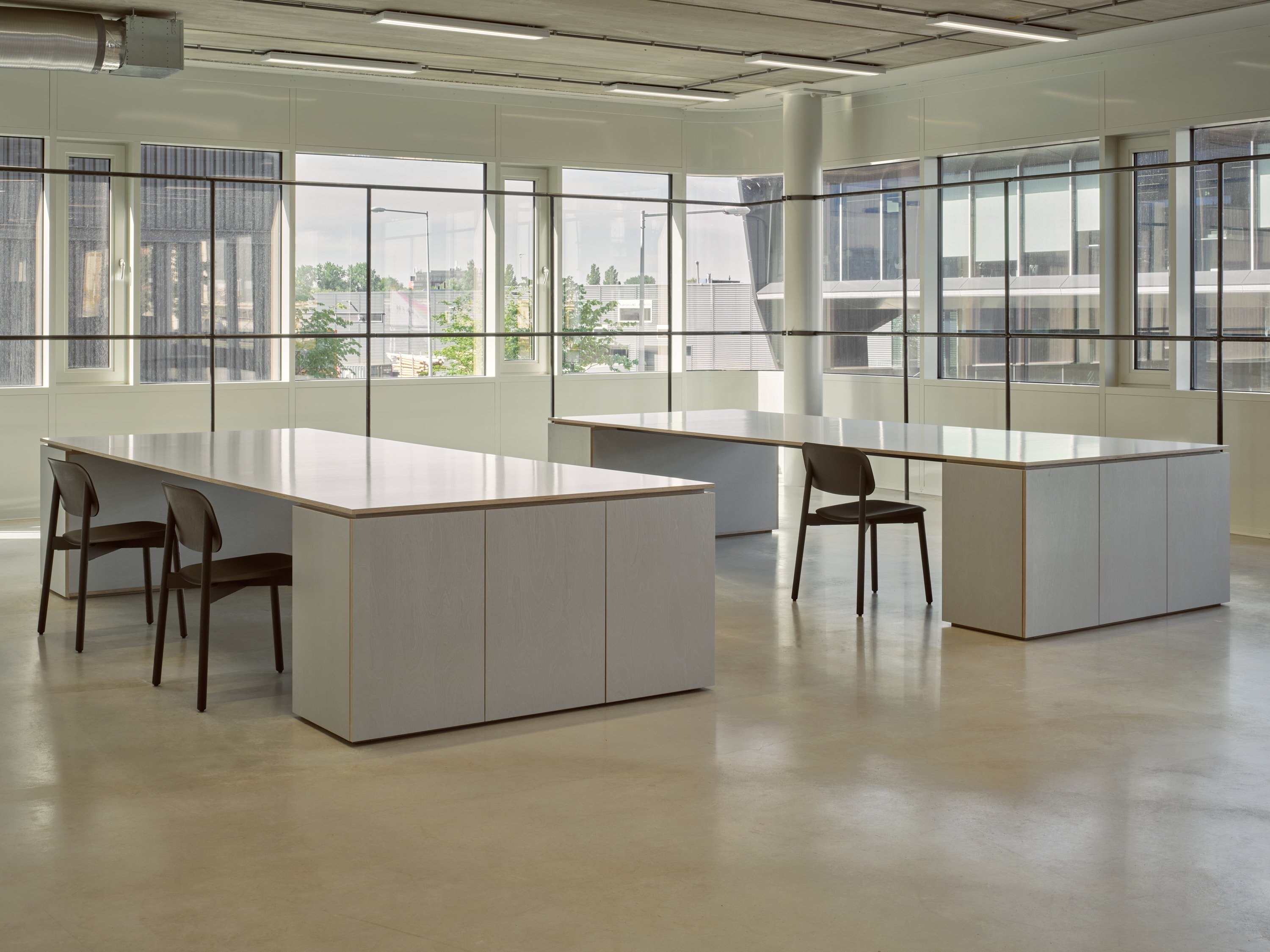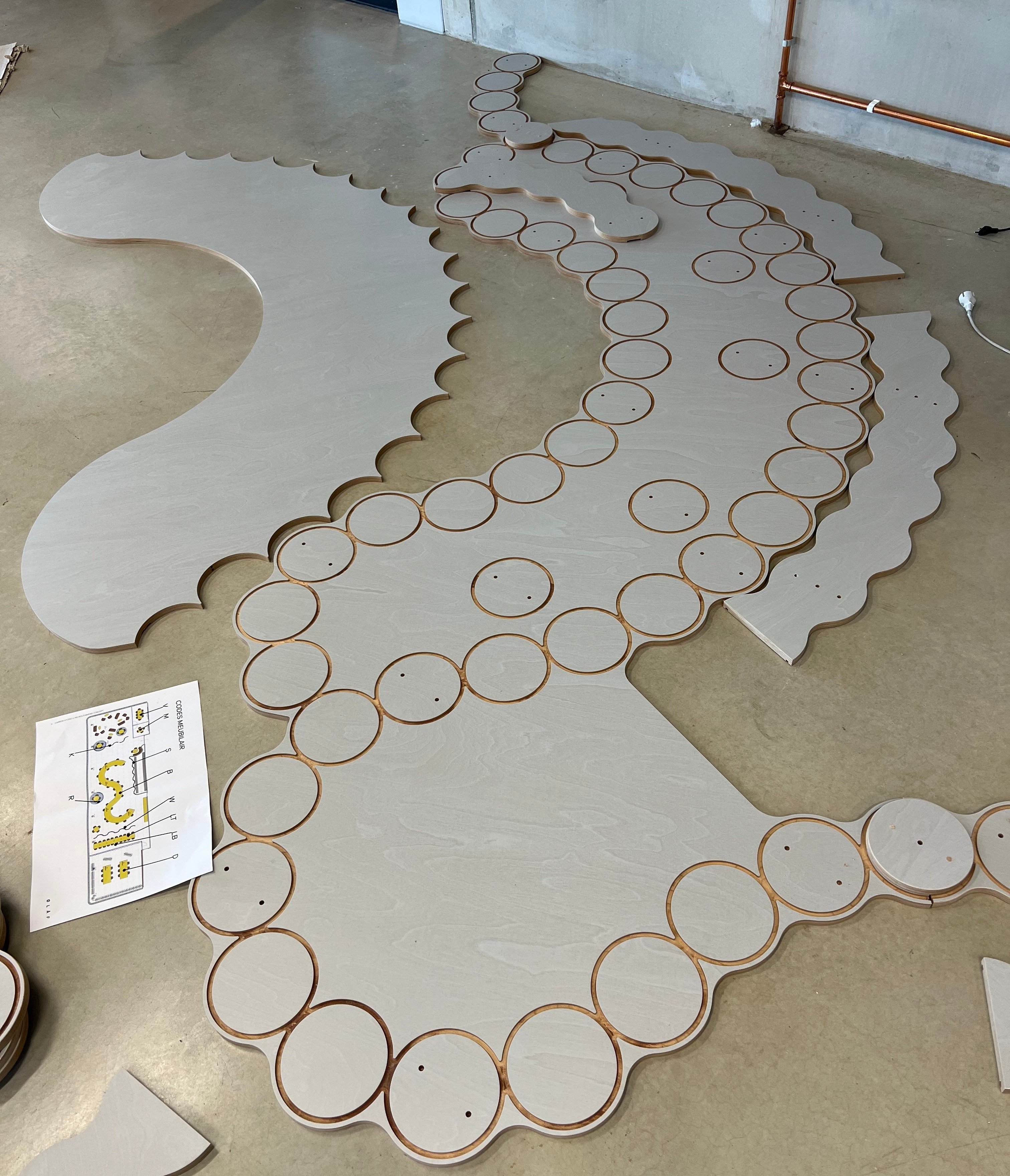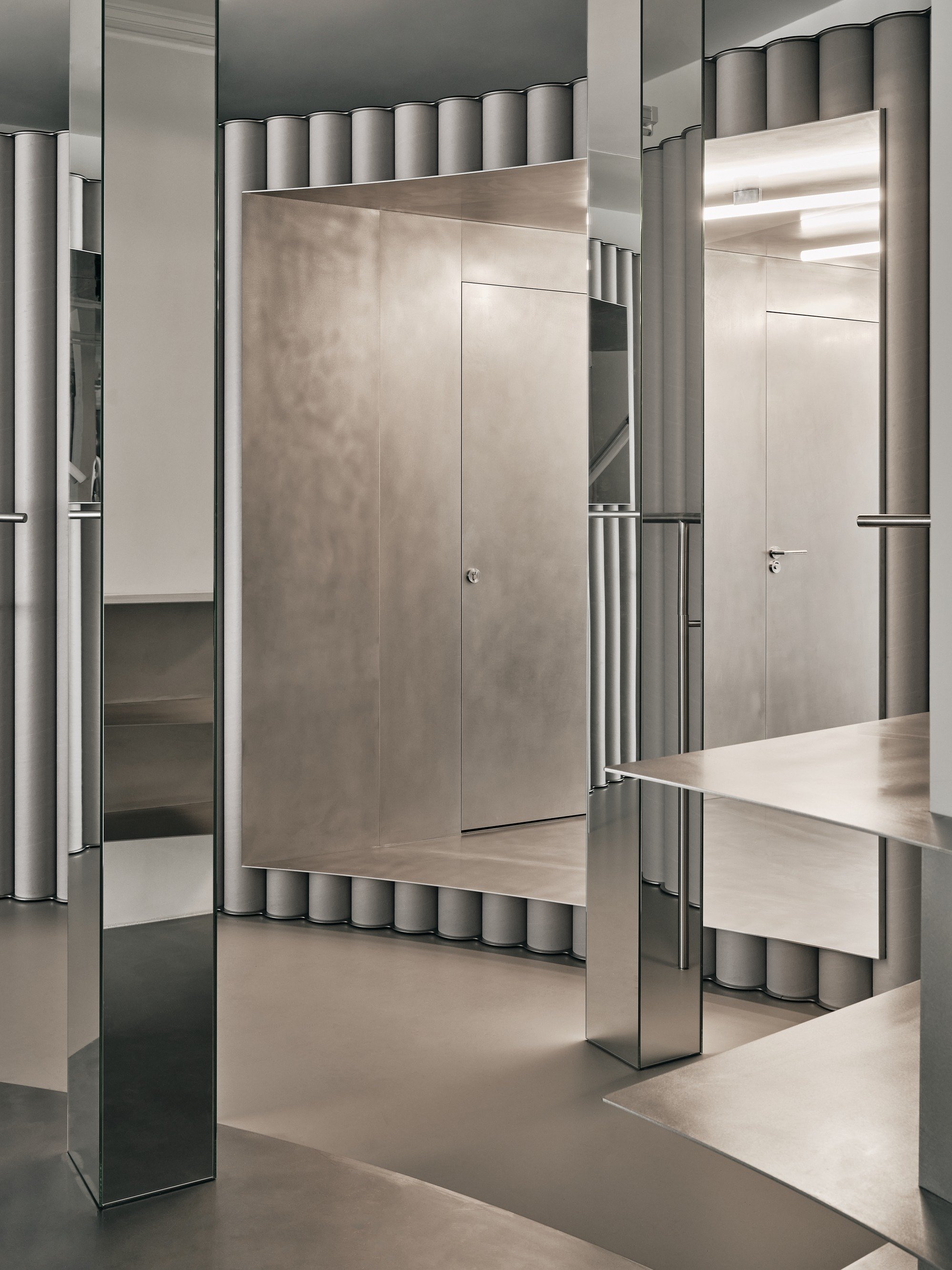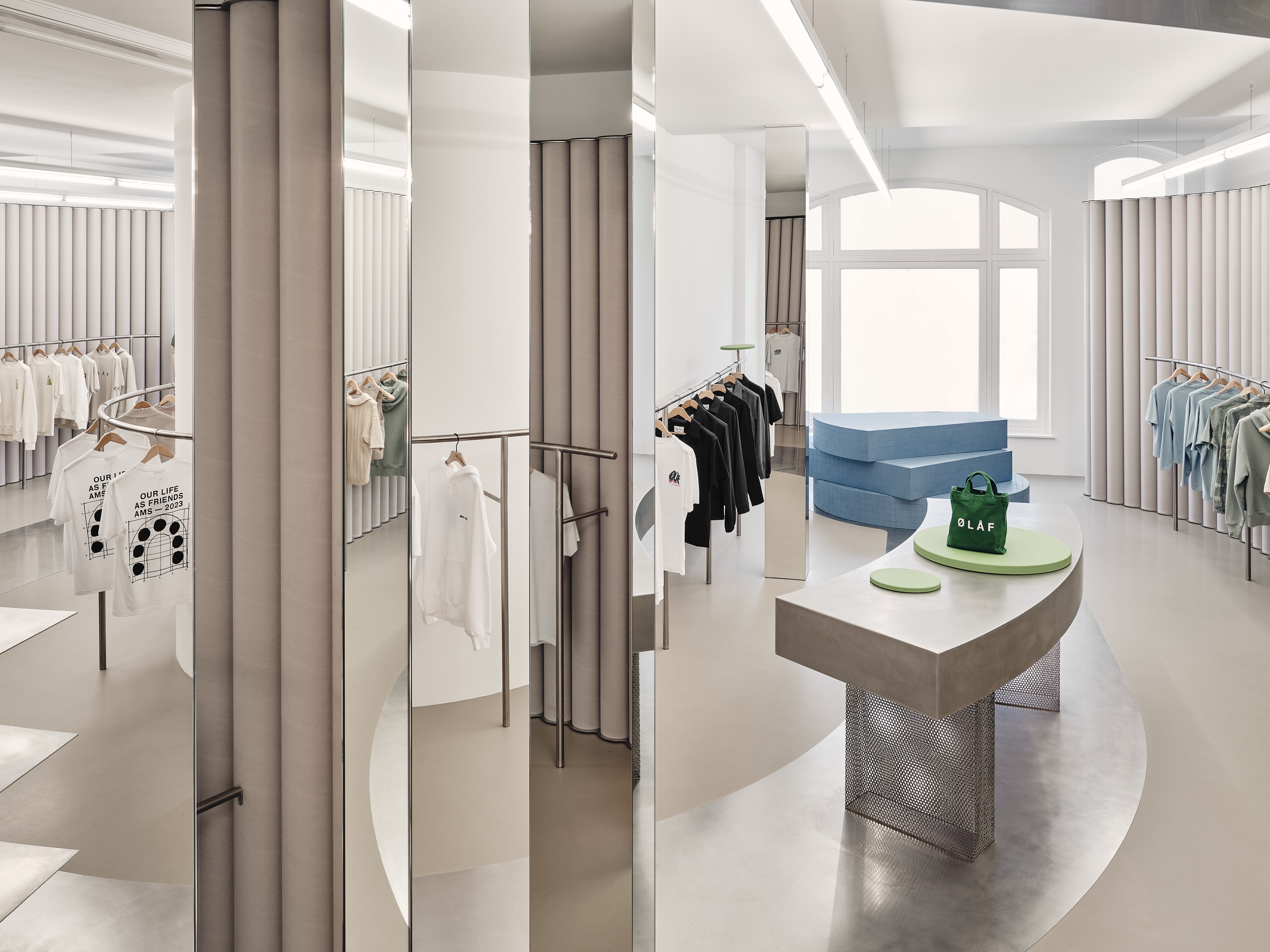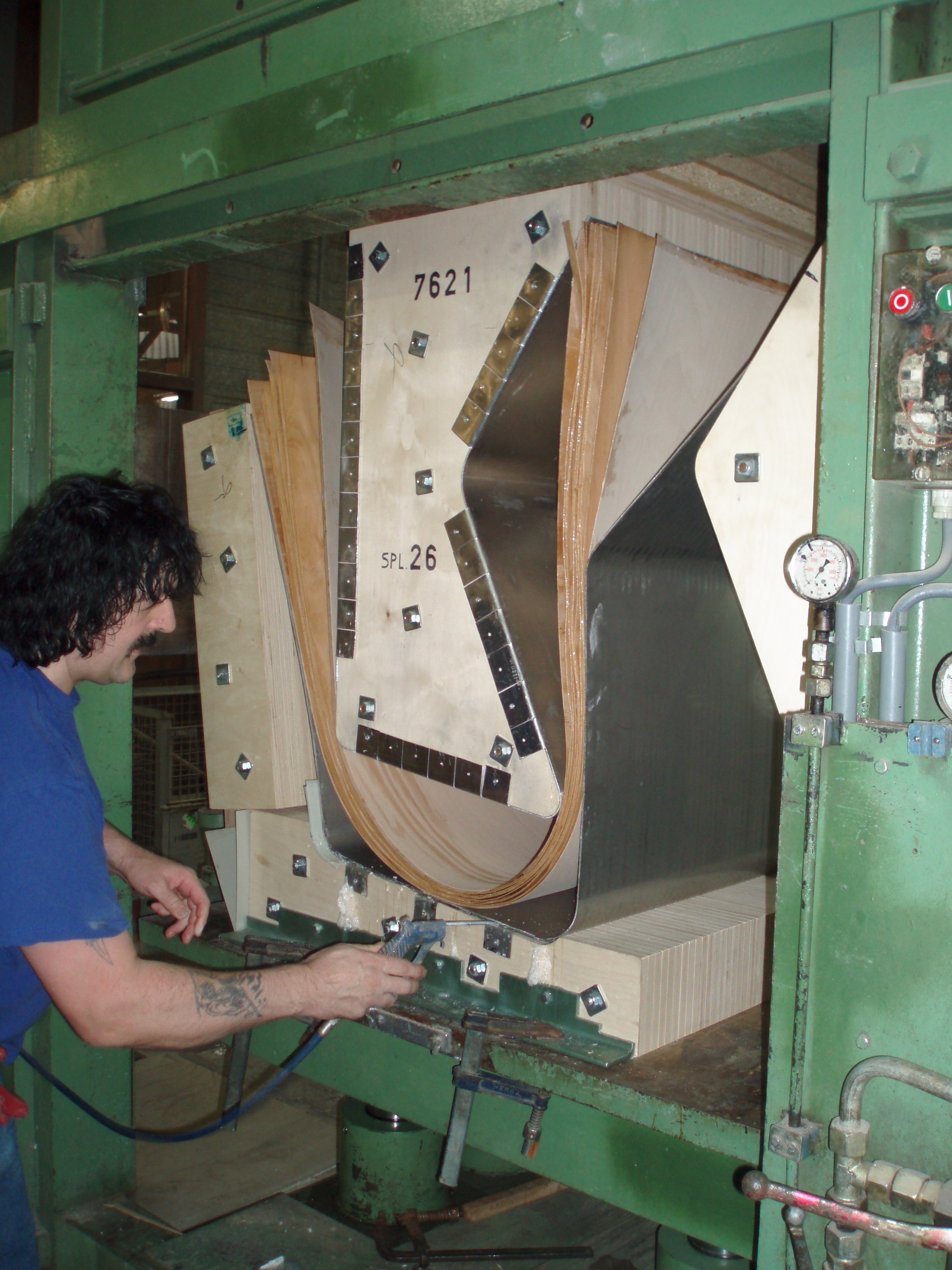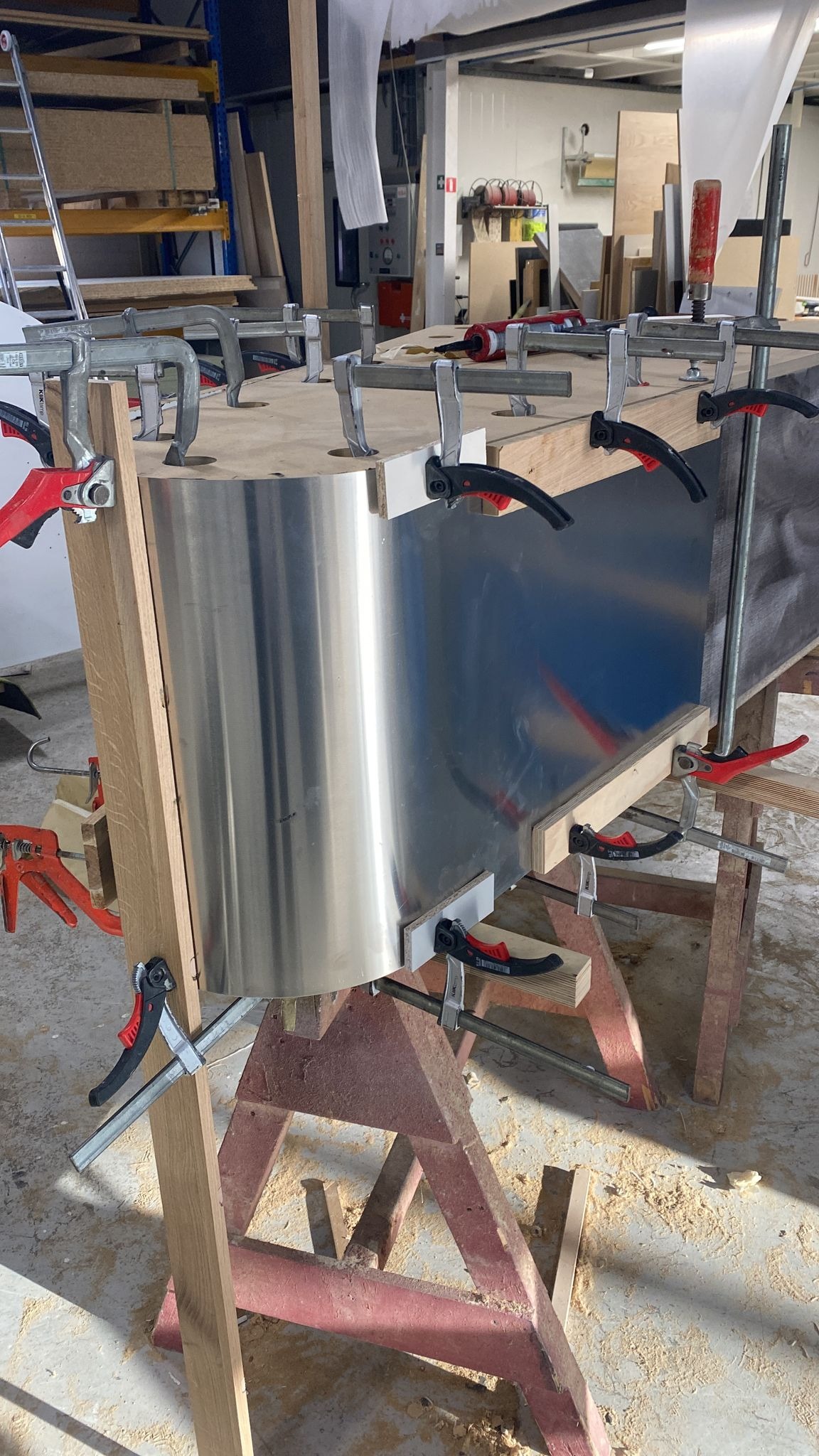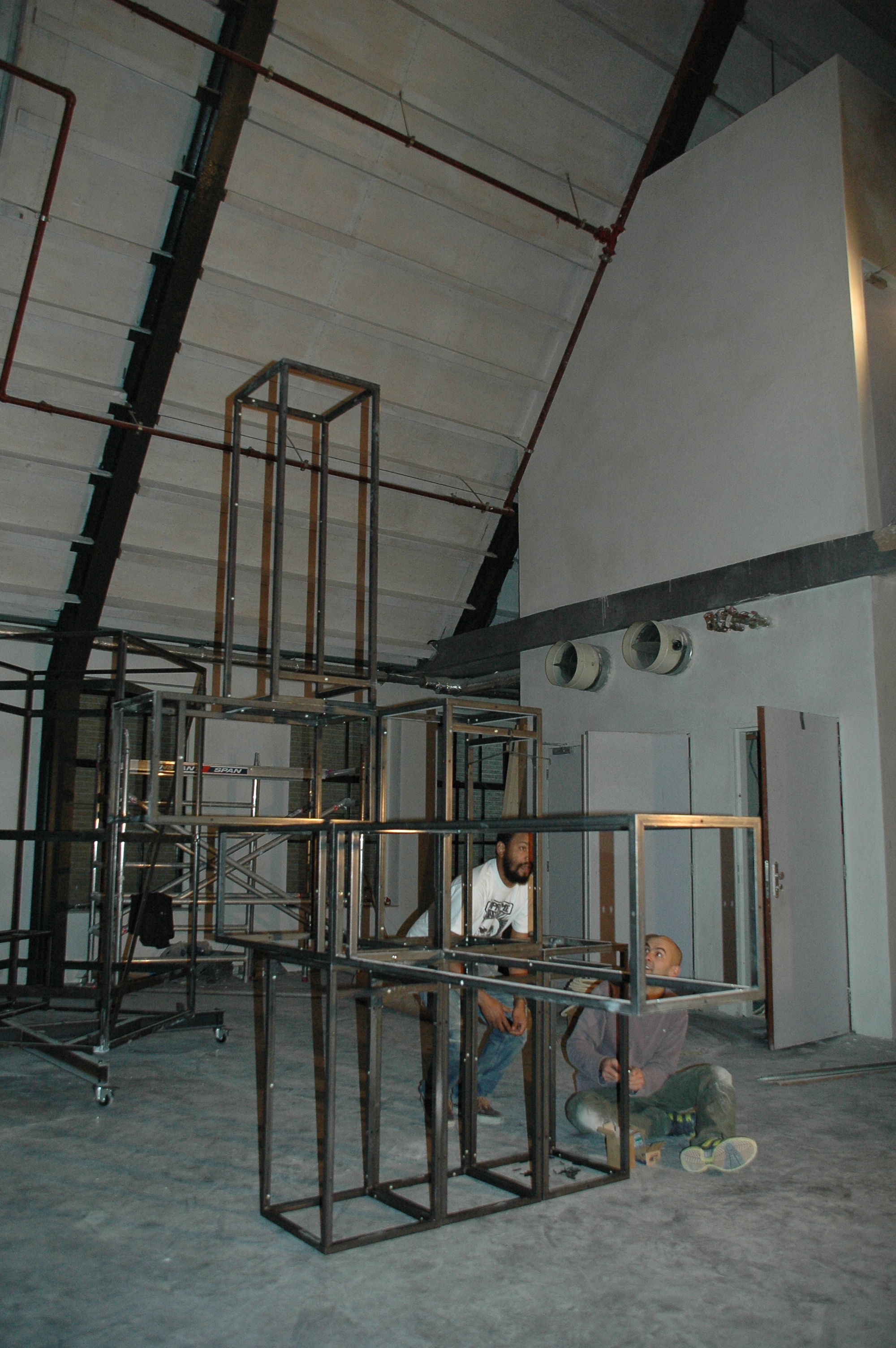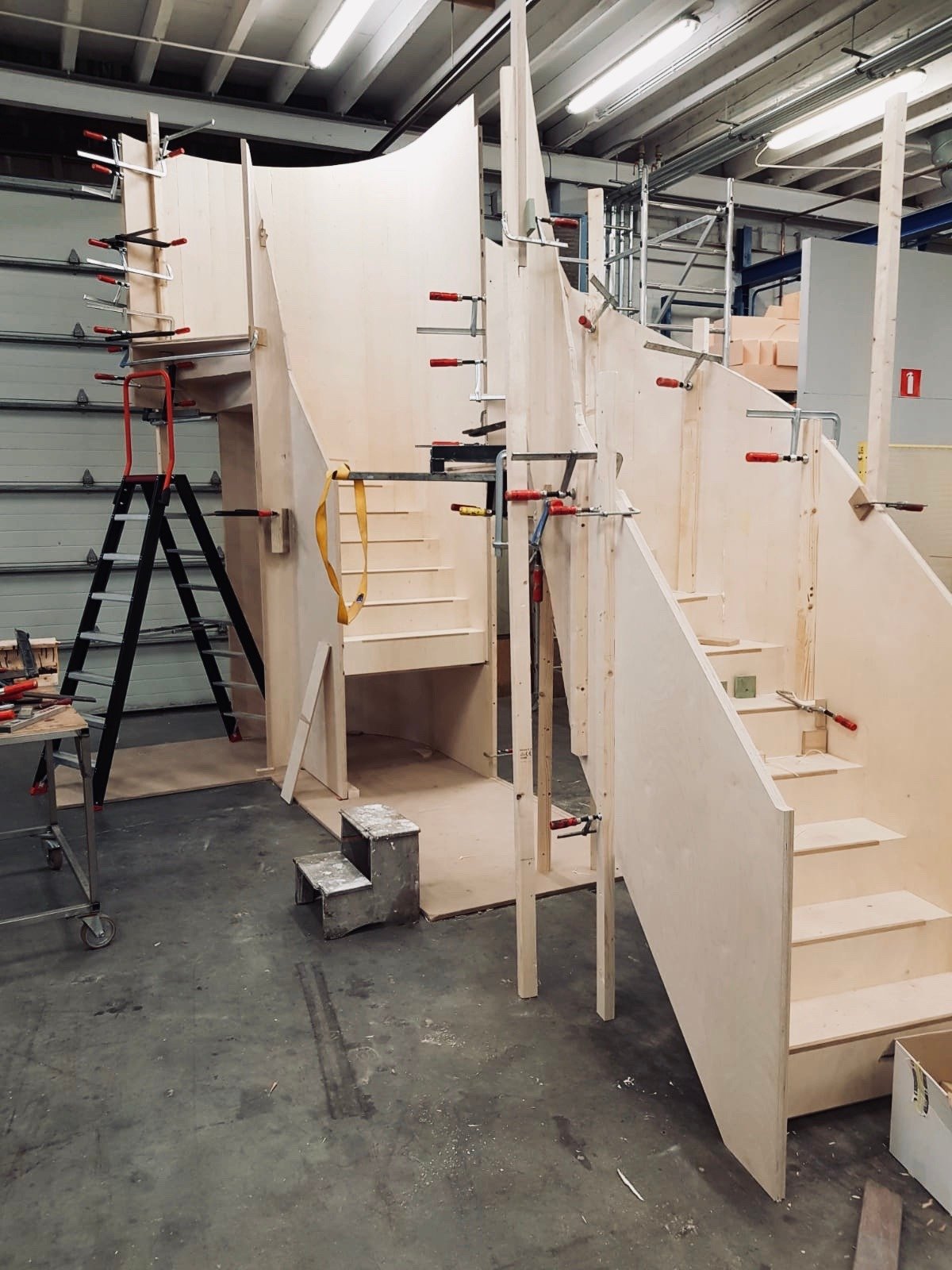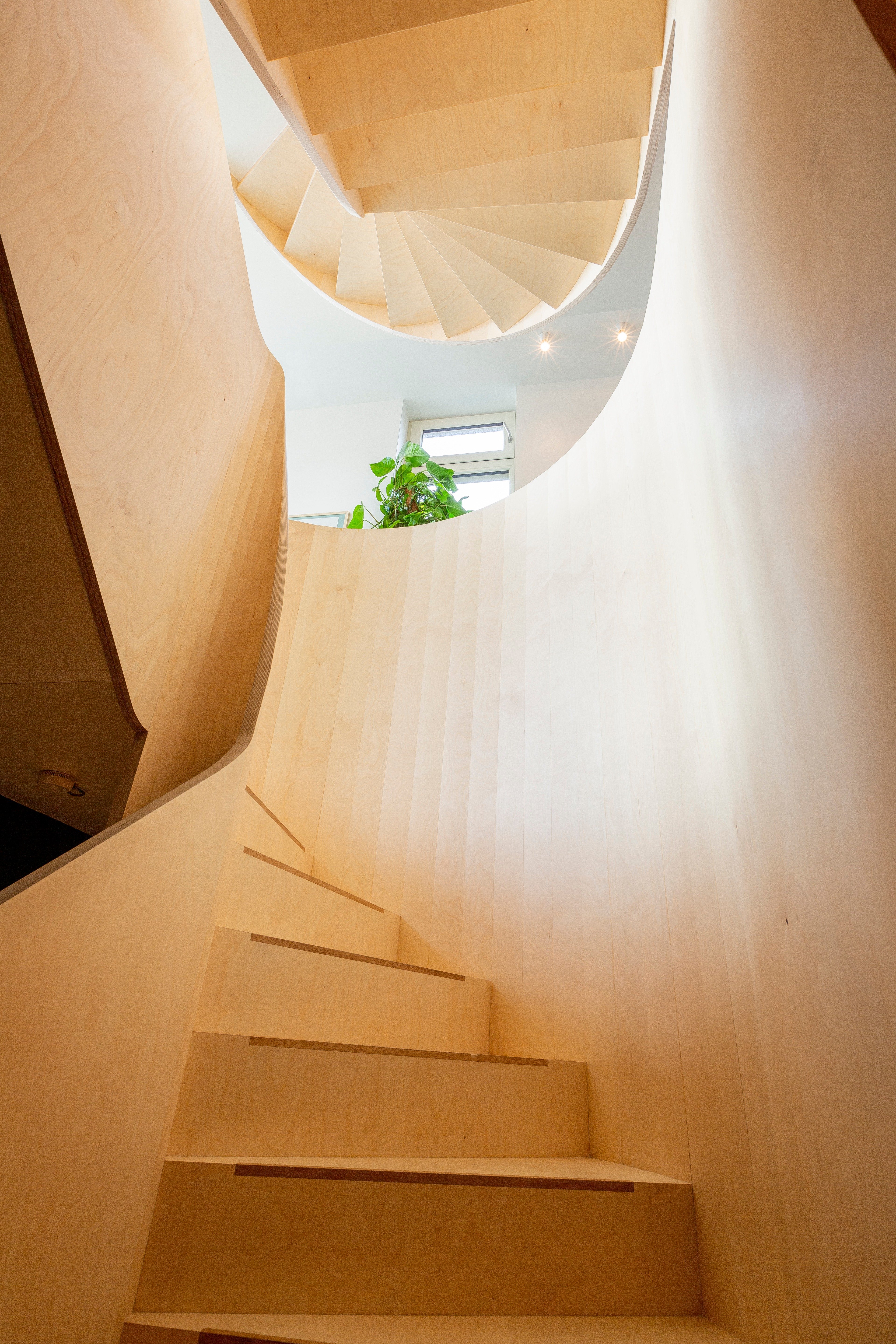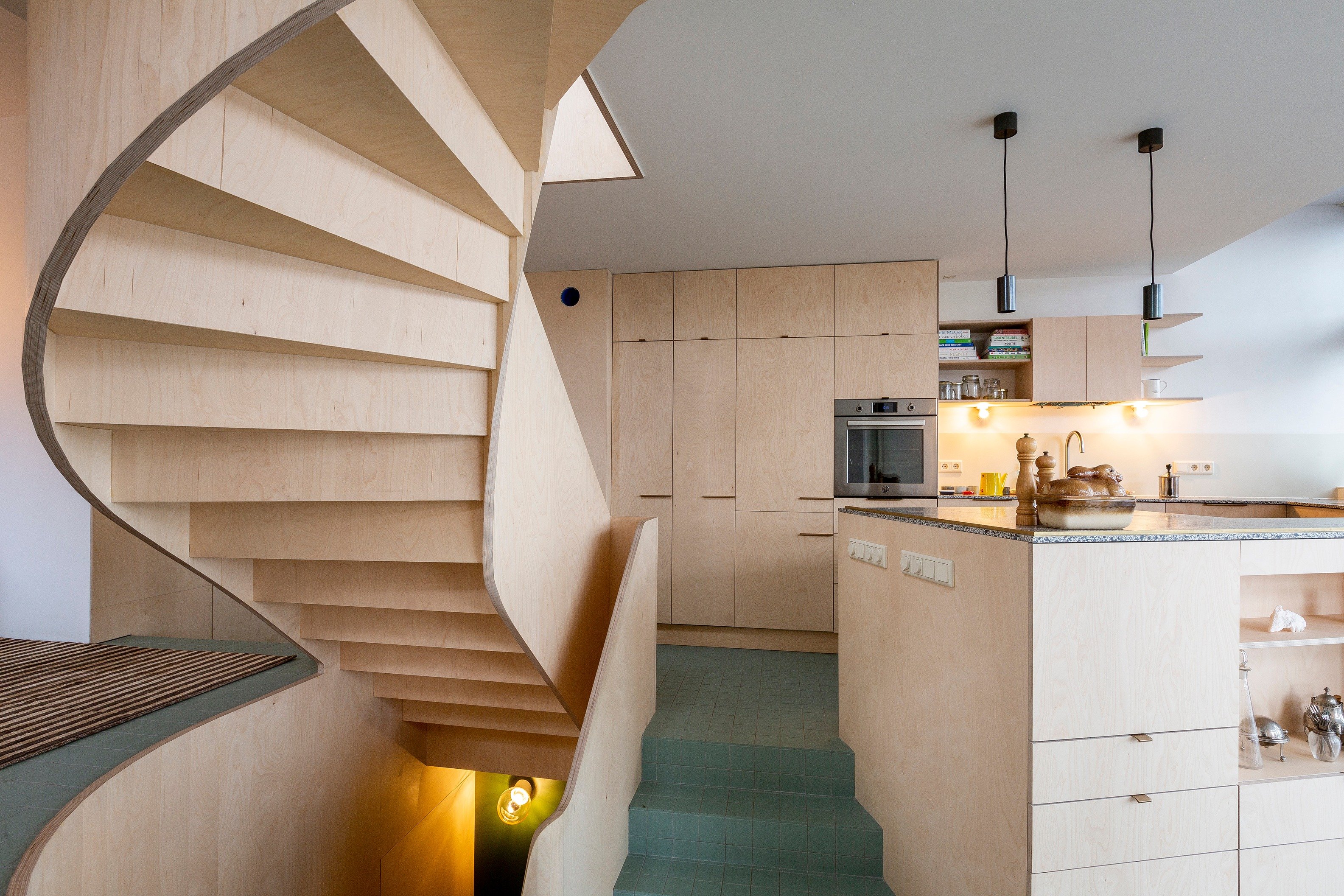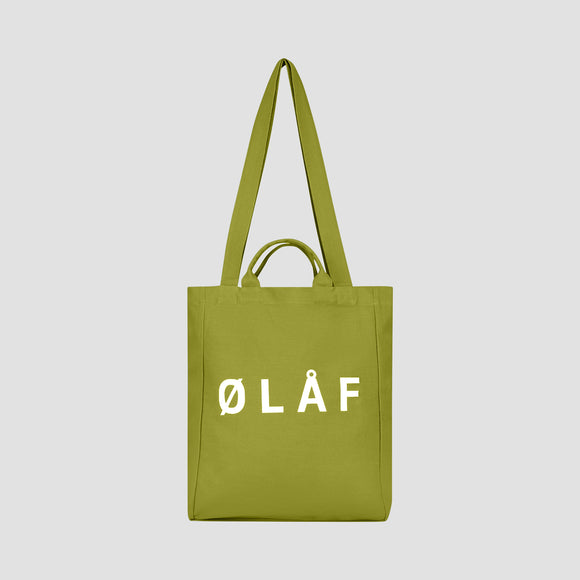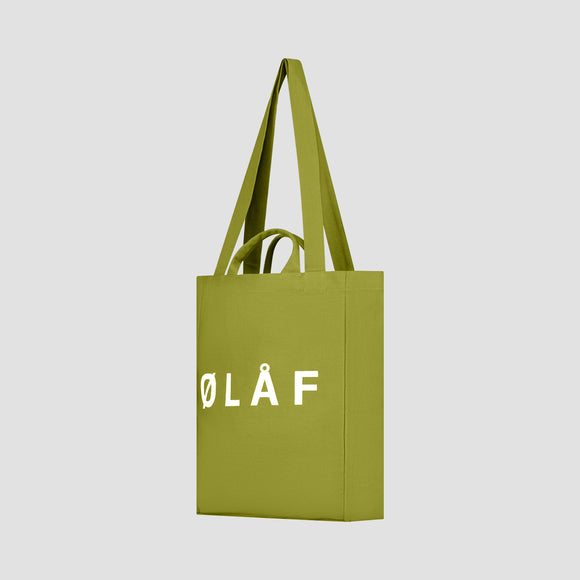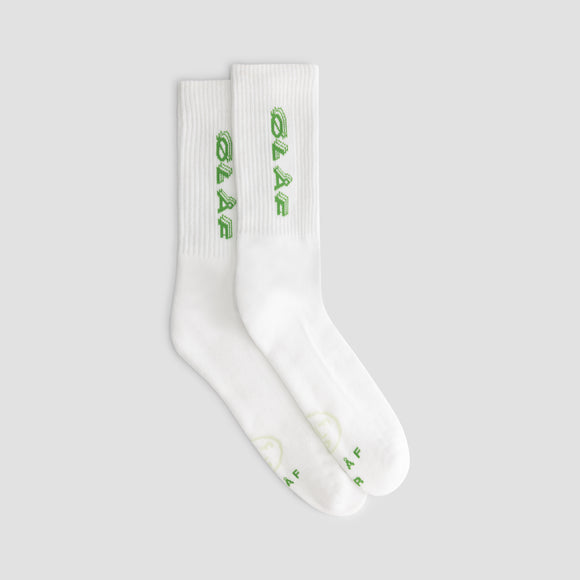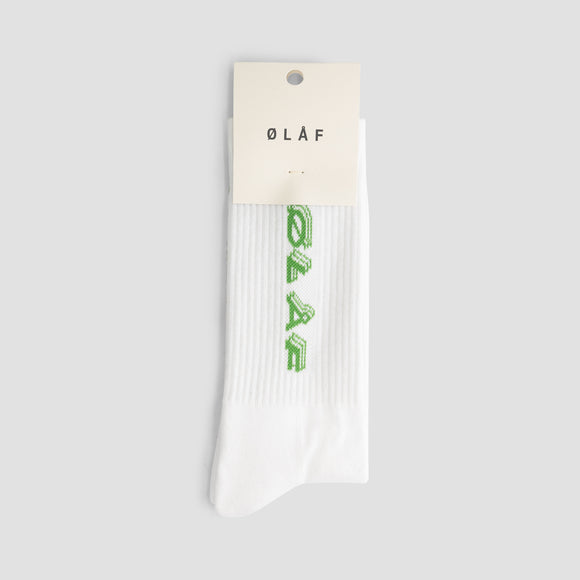Hey Pieter, you’ve created spaces for brands such as G-Star, Ace&Tate, Precinct 5, and most recently, OLAF’s new HQ and flagship store. Tell us about the design.
Olaf had a lot of confidence in me and gave me a lot of freedom. The brief was very loose which I really enjoyed. I think that’s also very typical about Olaf and the people that work at the company, there’s a lot of trust. To start the design, there were two main factors I looked at: one is the brand and the second is the context of the space. In my conversations with Olaf about the brand, there was a lot of talk of streetwear, but OLAF is a bit more high-end so that's what is reflected in the store. We came up with this idea of a minimalist display to really let the clothing speak, but at the same time it‘s not the hard, cold minimalism that you see in many stores. That just didn’t fit the character of the brand. So, we came up with this ‘friendly minimalist’ concept. Second, was looking at the retail space. It’s two adjacent ground floor spaces of two separate buildings that have been connected through a small passage. The idea was to create this sort of gallery with a continuous horseshoe wall connecting the two spaces. We placed clothing on the inside and outside of the horseshoe and in three places the wall is punctured by two displays or vitrines, and the third puncture connects the horseshoe with the courtyard so light comes in from the back. The courtyard is another really nice feature of this space because it helped create a very logical area for fitting rooms – it’s a little bit back in the store, so you feel secure, but there's beautiful daylight. Then, the question was ‘How do we build it?’ The materialization philosophy for the brand that we developed is for both the retail space and the headquarters. They are developed as one concept. The idea was to design something that is not fixed but basically designed for change. Just like the way people grow and change, brands like OLAF do too. So, I view the office and the store as platforms and we design the rules for those platforms that allow change to happen very easily.
